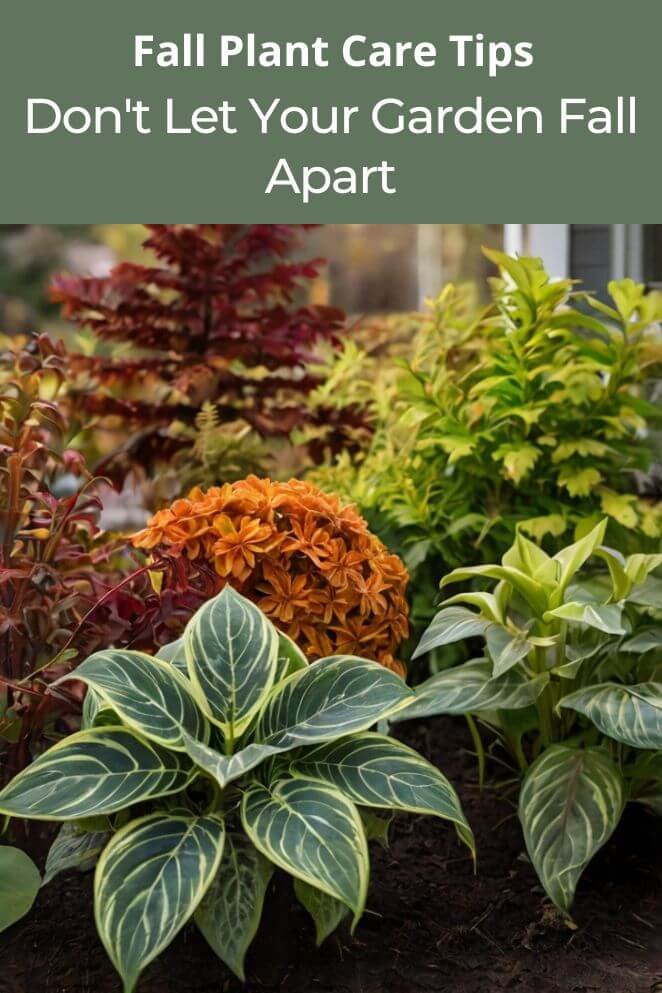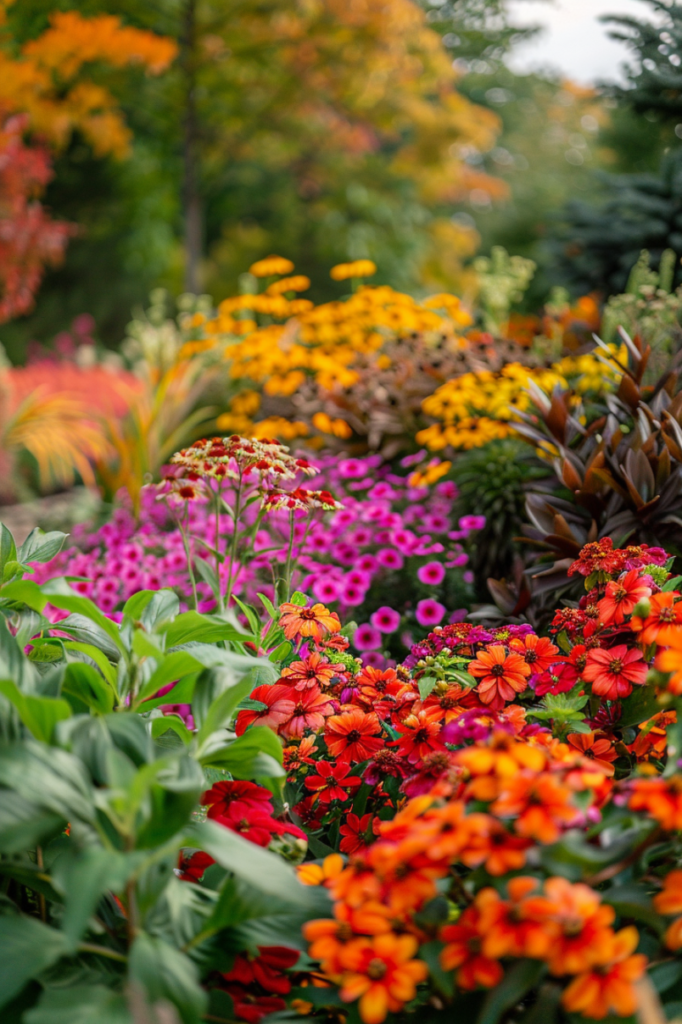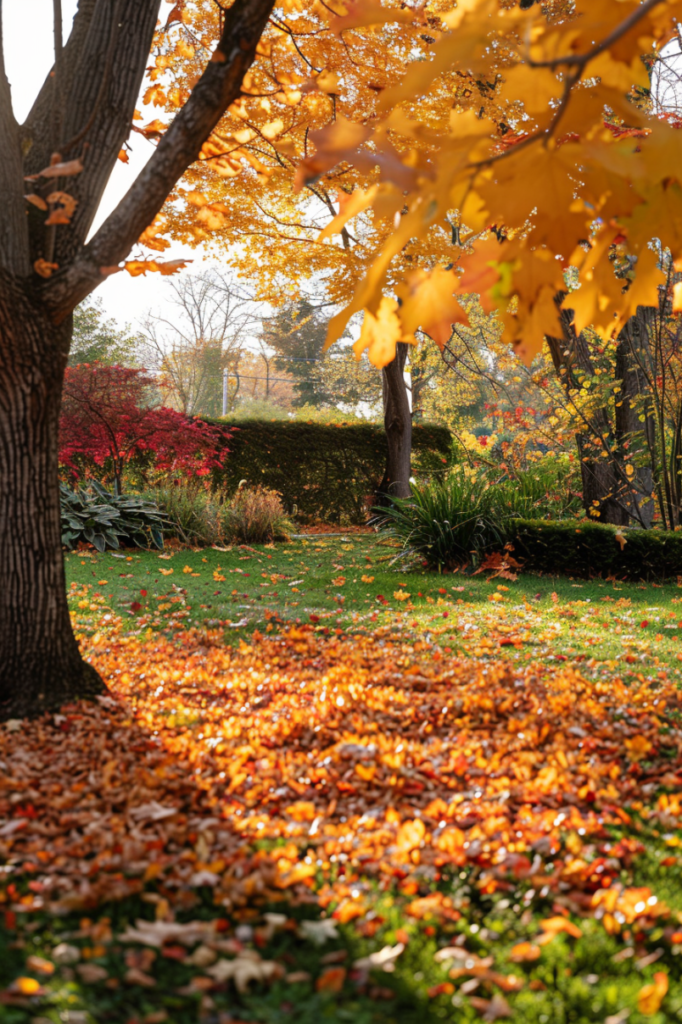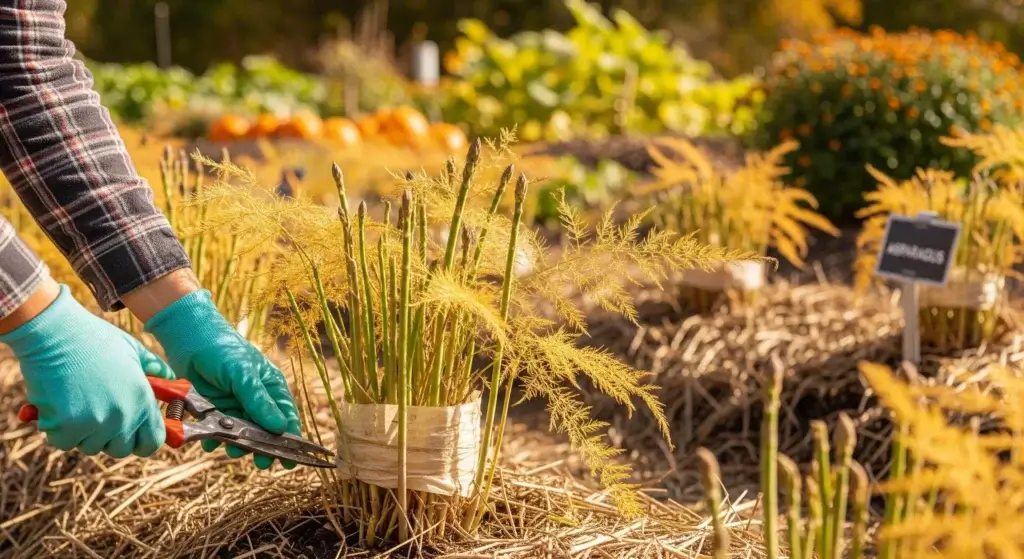
As the vibrant hues of summer give way to the cool, crisp days of fall, it’s time to adjust your plant care routine.
The change in season brings shorter days, cooler temperatures, and less intense sunlight, all of which can affect your plants.
Proper fall plant care ensures that your green friends remain healthy and robust through the transition.
This guide will provide you with comprehensive tips on adjusting watering schedules, ensuring adequate light, fertilizing and pruning, monitoring temperature and humidity, and bringing plants indoors.
Adjusting Watering Schedules
Watering less often
During the fall season, days get shorter and temperatures cool down.
This change means that plants typically need less water compared to the hot summer months.
Overwatering during fall can lead to problems like root rot, where the roots become damaged from too much moisture.
It’s important to adjust your watering routine by watering less frequently.
Most plants prefer the soil to dry out a bit between waterings at this time of year.
- Read also: Houseplants Bloom: Spring Plant Care Tips for Lush Greenery
- Read also: A Step-by-Step Guide: How to Overwinter Rosemary
Checking soil moisture
Before watering your plants, always check the moisture level in the soil.
You can do this by sticking your finger about an inch deep into the soil.
If it feels dry to the touch, it’s a good indicator that it’s time to water.
For a more accurate measurement, you can use a soil moisture meter, which gives you a precise reading of how moist the soil is.
Allowing the soil to dry out slightly between waterings helps prevent issues like root rot and ensures your plants get just the right amount of water they need to thrive.

Ensuring Adequate Light
Moving plants
As the days get shorter during fall and winter, it’s important to find the best spots for your plants where they can receive enough light.
South or east-facing windows are ideal because they typically get the most consistent sunlight throughout the day.
Placing your plants here ensures they get sufficient light to thrive and grow healthily.
Adequate light is crucial for plants to photosynthesize, which is how they convert light into energy for growth.
Using artificial light
If natural light is limited or your home doesn’t have suitable windows, you can use artificial light sources like grow lights to supplement sunlight.
LED grow lights are a great choice because they are energy-efficient and provide the full spectrum of light that plants need for photosynthesis.
Position the grow lights about 6 to 12 inches above the plants, adjusting the height as your plants grow.
Keep the lights on for about 12 to 16 hours a day to mimic daylight hours and promote healthy growth.
Rotating plants
To ensure all sides of your plants receive equal light exposure, rotate them every few days.
This practice helps prevent your plants from leaning towards the light source and promotes even growth.
By rotating your plants, you encourage balanced development and maintain their overall health and appearance.
Fertilizing and Pruning
Scaling back fertilizing
During the fall season, many plants naturally slow down their growth.
It’s important to adjust your fertilizing routine accordingly.
Over-fertilizing during this time can cause salts to build up in the soil, which can harm the roots of your plants.
To avoid this, reduce the frequency of fertilizing to once a month or consider stopping altogether until spring, depending on the specific needs of your plants.
This allows your plants to rest and prepare for the next growing season without being overwhelmed by nutrients they don’t currently need.
Pruning yellow leaves
Fall is a good time to inspect your plants for any yellow or dead leaves.
These leaves can be pruned off using clean, sharp scissors or pruning shears.
Removing yellow or dead foliage not only improves the appearance of your plants but also prevents the spread of diseases and reduces the risk of pests finding a home in decaying leaves.
Pruning stimulates healthy growth by redirecting the plant’s energy towards producing new leaves and flowers rather than trying to sustain damaged ones.

Monitoring Temperature and Humidity
Temperature control
Most indoor plants thrive in temperatures ranging from 65 to 75°F (18 to 24°C).
It’s important to avoid placing plants near drafty windows, doors, or heat sources like radiators and vents.
Sudden temperature fluctuations can stress plants, causing their leaves to drop or wilt.
Try to maintain a stable temperature environment to keep your plants happy and healthy throughout the fall season.
Using humidifiers
As the weather gets cooler in fall and indoor heating systems come on, the air inside can become dry.
This dry air can be tough on plants, which often prefer humidity levels around 40-50%.
To maintain adequate humidity, especially for tropical plants, consider using a humidifier.
This device adds moisture to the air, creating a more comfortable environment for your plants.
Alternatively, you can place a shallow tray filled with water near your plants or group them together.
As the water evaporates, it increases the humidity directly around the plants.
Bringing Plants Indoors
Bringing houseplants inside
If you have houseplants that have been outside during the summer, it’s important to bring them indoors before nighttime temperatures consistently drop below 55°F (13°C).
Sudden exposure to cold can shock plants and cause damage, especially to tropical or sensitive plants.
When transitioning plants indoors, acclimate them gradually to avoid stress.
Place them in a well-lit area away from cold drafts and monitor them closely for any signs of distress.
Checking for pests
Before bringing your outdoor plants inside for the fall and winter, carefully inspect them for pests.
Check under leaves, along stems, and in the soil for any insects or eggs.
Common pests include aphids, spider mites, and scale insects.
If you find any pests, treat them promptly with insecticidal soap or neem oil to prevent infestations from spreading to your other indoor plants.
Regular inspection and treatment help keep your plants healthy and pest-free.

- Read also: Tomato Triumph: Tips on How to Overwinter Tomato Plants
- Read also: Blooms All Winter Long: Tips on How to Overwinter Hibiscus
Conclusion
Fall is a time of transition, not just for nature but for your indoor and outdoor plants as well.
By adjusting your watering schedules, ensuring adequate light, scaling back on fertilizing, monitoring temperature and humidity, and bringing plants indoors, you can help your plants thrive during the cooler months.
These care tips will ensure that your plants stay healthy and vibrant until spring returns.
FAQs
Water less frequently in the fall. Check the soil moisture and water only when the top inch of soil feels dry.
LED grow lights are recommended for their energy efficiency and ability to provide the full spectrum of light that plants need.
Bring outdoor plants indoors before nighttime temperatures drop below 55°F to prevent shock and damage.
Inspect under leaves and around stems for insects or eggs. Use insecticidal soap or neem oil if you find any pests.
Use a humidifier, place a tray of water near your plants, or group plants together to create a more humid environment.



